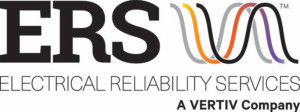Electrical Reliability Services, Inc. celebrates its 50th Anniversary this year. It has been an exciting journey that many who grew up with Electro-Test, Inc. (eti) still wax on about. Some of the early associates are still with the organization today; some have left and come back. Even the newer employees know the stories and hold them as part of the fabric that still weaves through the company today. From its inception, the foundation of Electrical Reliability Services was built on safety and reliability principles, which hasn’t changed in 50 years.
1971: John Moore founded Electro-Test, Inc. (eti) on the need for a higher standard of electrical services
Before the company’s founding, unprecedented industrial growth and development of power generation, transmission, and distribution systems fueled the rapid and somewhat haphazard expansion of the electrical services industry throughout the 1950s and 1960s. Automation, public lighting, a new wave of electrical appliances, and industrial production advancements fueled the need for more power and infrastructure expansion. There was also a heightened interest in alternative power resources, new electrical system technology, and system management, along with concerns about safety and electrical reliability.
When Moore founded eti, he saw the industry’s frenzied state and recognized a need for a higher standard of electrical field service. At the time, electrical equipment manufacturers dominated the services industry. Moore felt strongly that they should not be testing their equipment; corporate interests might compete with customer interests and compromise service quality. Moore believed that electrical testing and maintenance services should be independent of the equipment manufacturers’ service divisions. Those independent technicians should be trained and qualified. That system management should be standardized at a time when electrical system acceptance, maintenance, and testing services varied from job to job and from company to company. Quality service, safety, and a higher level of reliability are the principles upon which eti was founded. They remain the driving force of Electrical Reliability Services (originally eti) today.
1972: NETA – The InterNational Electrical Testing Association (NETA) is founded and publishes the Standard for Acceptance Testing Specifications for Electrical Power Equipment and Systems.
NETA will celebrate its 50th Anniversary next year. Like eti, the Association was formed in response to the electrical industry’s rapid growth and the increasing challenges in reliability and safety. The Association’s founding mission was to serve the electrical testing industry by establishing standards, publishing specifications, accrediting testing companies, certifying testing technicians, and promoting its members’ professional services.
NETA’s first significant contribution to the electrical testing industry was its publication of a comprehensive standard for acceptance testing specifications for electrical power equipment and systems.
1975: eti becomes a NETA member company
Moore’s vision for eti closely aligned with NETA’s mission, so he applied and was accepted for membership in the Association on behalf of his company. With eti as a NETA member, John became a key contributor to the Association’s impact on the electrical industry’s service quality.
1975-1980: eti opens three offices in California and Washington State.
NETA establishes electrical technician certification, publishes maintenance testing specifications, and hosts its first technical training conference
During the 1970s, eti’s growing reputation in the West as a quality service provider and several key customer opportunities helped fuel office expansion. By 1980, eti had offices in San Francisco, Los Angeles, and Seattle. As eti expanded, the company’s principles were instilled in the new office teams – past employees recall how committed eti’s leadership was to ensure that employees were highly trained, NETA certified, and executing the quality of services specified in the NETA standards.
Leadership at eti continued to support NETA by serving on the NETA Board of Directors, with Moore as NETA president from 1978-1979 and again from 1983-1984. In the early years of NETA, the Association’s Board of Directors worked to create the pillars of NETA’s contribution to the industry. They established the Standard for Acceptance Testing Specifications for Electrical Power Equipment and Systems, the standard for Maintenance Testing Specifications for Electrical Power Equipment and systems, along with the Standard for Electrical Testing Technician Certification, and NETA’s first technical training conference, held at Dunfey’s Hotel in Dallas, Texas.
The company’s technicians were among the first to earn the NETA Certification requiring that technicians be knowledgeable and experienced in performing testing services according to the acceptance and maintenance testing standards developed by the NETA Standard Review Council. NETA leadership wrote the NETA standards based on a collection of national standards designed to order different aspects of the electrical power industry. They included OSHA, IEC, IEEE, amongst others.
Throughout the 1980s and early 1990s, eti continued to expand, fueled as it was by increased government regulations, power industry deregulations, and the emergence of renewable energy exploration. As their testing and service business grew, they opened offices in Denver, Portland, San Diego, Las Vegas, Kansas City, Salt Lake City, Phoenix, Reno, and Albuquerque. By the early 1990s, eti had become a highly regarded testing company with a solid and dedicated customer base.
1991: eti is one of the first to comply with the new NETA accreditation process
In the early 1990s, NETA validated the need for third-party, independent testing firms involved in full-service testing, analysis, and maintenance of electrical power systems. The Association introduced a two-fold accreditation process to certify companies and their technicians. The leadership at eti participated in the program’s development and became one of the first to comply with the new NETA Accreditation process.
1995: Emerson Electric acquired eti and expanded its services and geographic footprint
In 1995, eti entered a new chapter in its service to the industry when Emerson purchased the company. Moore retired soon after, and Emerson installed new leadership to guide eti’s growth. Emerson’s purchase of eti infused new capital into the company that benefited customers significantly. It allowed for the influx of new technology, investment in research, additional resources, and an expansion of the eti engineering team and its problem-solving capabilities. Customers with regional and national facilities also benefited from eti’s geographical expansion as the first nationwide testing company.
2004: eti is renamed Electrical Reliability Services, Inc. to reflect broader service portfolio
As eti grew, their service capabilities expanded beyond acceptance and maintenance testing to include engineering and commissioning services. In 2004, company leadership considered a name change. Electrical Reliability Services spoke better to the customer benefit and scope of their services and provided opportunities for further service expansions in the future.
Throughout the 2000s, industry developments accelerated business growth. These included the Energy Policy Act of 2005, which provided tax incentives and loan guarantees for energy production. The North American Electrical Reliability Corporation (NERC) became the new high-powered reliability watchdog to enforce rules and fine companies for not complying with standards. These changes drove electrical service demand and a growing interest in safety and reliability while also fueling NETA’s efforts. Electrical Reliability Services (ERS), committed as ever to the NETA mission, supported the Association’s work through Board membership, committee participation, and promoting the NETA standards to their constituents. The Association’s efforts, with Electrical Reliability Services’ and other member companies’ support, paid off and the NETA Standard for Certification of Electrical Testing Technicians was approved by the American National Standards Institute (ANSI), in 2000, followed by ANSI approval of the NETA Standard for Acceptance Testing and the NETA Standard for Maintenance Testing by 2005.
2015: ERS worked with NETA to get standard for electrical commissioning ANSI approved.
The NETA Standard for Electrical Commissioning Specifications was created and ANSI approved in 2015. This standard clarified the difference between general commissioning and electrical commissioning and documented the importance of specific electrical commissioning requirements. ERS supported and contributed to creating this standard, serving on the committee and as a consultant to the NETA Standard Review Counsel. The electrical commissioning standard was designed to coordinate with the ANSI/NETA Standard for Acceptance Testing to assure that tested electrical equipment and systems are operational, within applicable standards and manufacturer’s tolerances, and installed to design specifications.
2016: Platinum Equity Group purchases ERS, which becomes a part of Vertiv.
Between 1995 and 2016, ERS grew to become a vital member of the Emerson Network Power group. In 2016, Emerson decided to streamline its portfolio of companies and sold ERS and other Network Power companies to Platinum Equity. Under the Platinum Equity umbrella, ERS would become well-positioned to achieve even greater long-term goals.
Platinum Equity soon rebranded the Network Power group of companies as Vertiv. Within Vertiv, ERS continued to serve its customers based on the principles it was founded on in 1971. It operated as a separate company with an independent set of executive leaders and accounting and marketing groups to ensure separation from the corporation’s manufacturing arms and maintain their NETA Accredited Company qualifications.
The next five years brought new growth and service expansion, a broadening of industry expertise, and expanded nationwide service capabilities, under Tom Nation, V. P. General Manager Vertiv Services; Earl Wilcox V.P. General Manager ERS; and Greg Smith, V.P. Sales.
2020: Vertiv becomes publicly traded on the New York Stock Exchange (NYSE)
Through a merger with GS Acquisition Holdings, Vertiv became a publicly-traded company in 2020.
For ERS, the acquisition holds great promise for its future and its customers who rely on them for service availability wherever and whenever it’s needed, the highest level of quality service, engineering, and electrical testing expertise, certified technicians, and state-of-the-art testing equipment.
“ERS’ success is rooted in customer relationships, and our commitment to provide next-level reliability remains unchanged,” said Earl Wilcox, V.P General Manager ERS.
2021: Electrical Reliability Services celebrates 50 years of leadership and service and launches new branding
As ERS celebrates its 50th Anniversary, it remains committed to its founding principles and is grateful to its customers, to the thousands of employees who have served the company over the years, to many key industry associations, and especially to NETA.
The company has evolved and grown tremendously since 1971. Some customers know the organization as ERS; others as Vertiv; some still as Electro-Test, Inc. (eti). ERS plans to recognize its employees and their customers in the coming months as it celebrates its 50 years of service as an industry leader and trusted partner.
Setting the stage for the next 50 years, ERS introduced a new brand look and logo that reflects its continued focus on safety, expertise, and service quality.

The new ERS rebranding effort serves to reaffirm and solidify the company as one of the largest electrical testing and engineering services companies in North America. The new branding reflects ERS leadership in servicing electrical systems and critical facilities with full electrical system life cycle support. The rebranding is based on customer and employee input. It involves a redesign of the company’s logo to include design elements to convey its unwavering focus on electrical safety and expertise.
“The updated branding is an opportunity for us to clarify our business and who we are as a company,” said Wilcox. “For the past 50 years, we have been a trusted partner to thousands of customers – customers who appreciate our expertise and the straightforward, approachable way we deliver it. We’re confident our new logo and look reflect that identity.”
Thank you to Julie Dondero, Leif Hoegberg, Doug Thomsen, John White, Earl Wilcox, and Jean-Pierre Wolff for their assistance with the historical details in writing this article.
